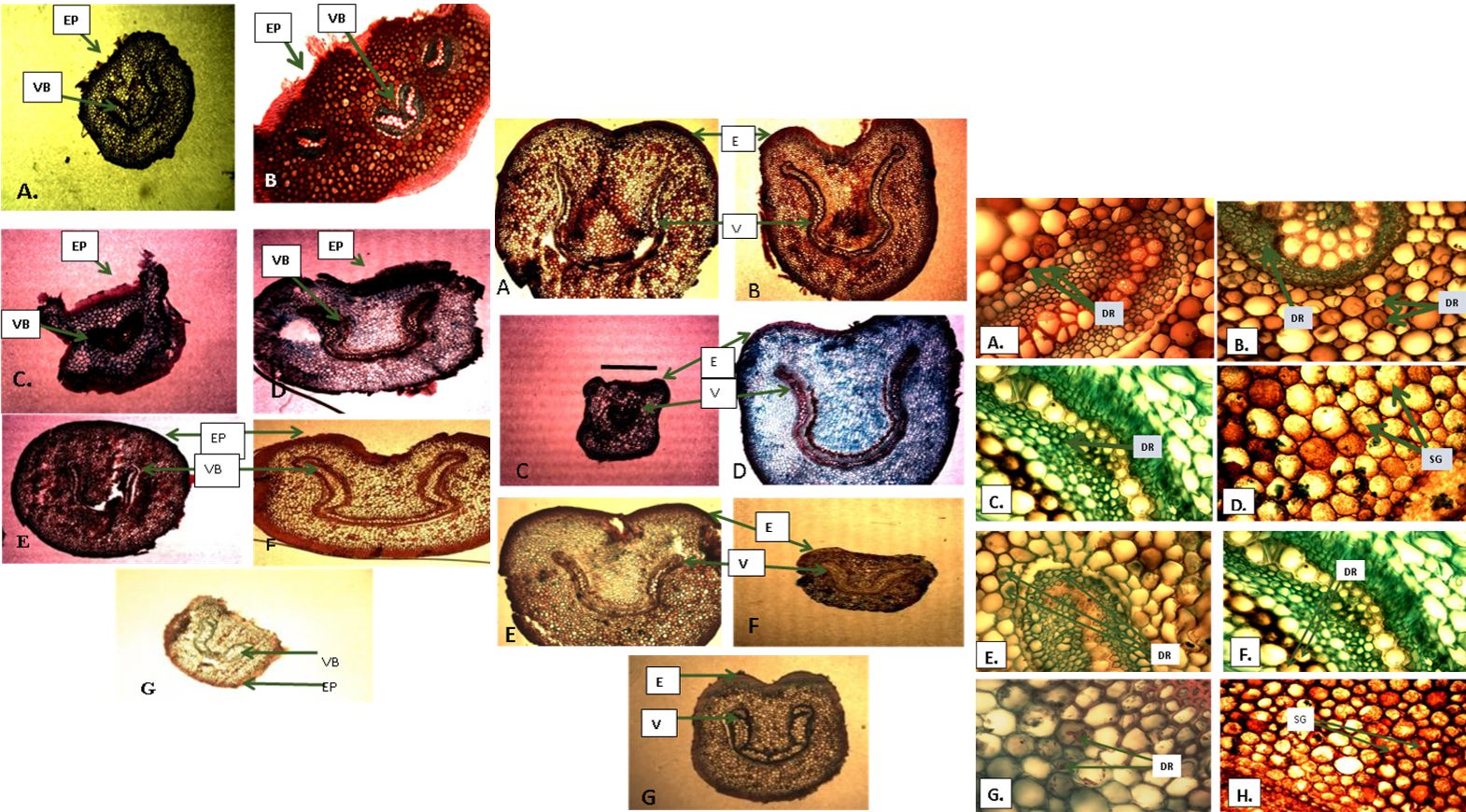Systematic significance of stipe anatomy of Pteris L. (Pteridaceae) from Southwestern Nigeria
DOI:
https://doi.org/10.15835/nsb12110644Keywords:
anatomy; Pteris L.; taxonomy; stipe; vascular bundlesAbstract
Stipe anatomy of seven Pteris species collected from various locations in the Southwestern Nigeria was investigated. This was with a view to identify characters of the stipe anatomy that are important in delimiting the species. Transverse sections (TS) of stipe at proximal median and distal regions were cut with the aid of a Reichert Austria sledge microtome at 10 µ thickness. Sections were stained in Safranin O for five minutes, rinsed in three successive changes of water and counterstained in Alcian blue for five minutes. The counterstained sections were rinsed in three changes of water, and then treated in serial grades of alcohol. Observation of prepared slides was made under light microscope. Based on the shape of the vascular bundles, the Pteris species fall into three categories which are inverted Omega, V or U shapes. The adaxial grooves varied from proximal to distal regions in all the species except in P. ensiformis where it was uniform throughout the regions.
Metrics
References
Bondada B, Tu C, Ma L. (2006). Surface structure and anatomical aspects of Chinese brake fern (Pteris vittata: Pteridaceae). Britannia 58(3):217-228.
Ogura Y (1972). Comparative anatomy of vegetative organs of the Pteridophytes. Gebruder Borntraeger, Berlin, pp 1-39.
Olga GM, Ignacio V (2012). The structure of petioles in Pteris (Pteridaceae). American Fern Journal 102(1)1-10.
Pitterman J, Watkin JE, Cary KL, Schuettpelz E, Broaderse C, Smith AR, Baer A (2015). The structure and function of xylem in seed free vascular plant: an evolutionary perspective. In: Ecological and functional xylem anatomy (Eds). Uwe Hacke, Springer International, pp 35.
Price MG (1974). A new section of species of Pteris. Kew Bulletin 29:725-730.
Remsi S, Thomas VP, Strinivas VK (2016) Stipe anatomical studies on selected pteridophytes of South India. Acta Botanica Hungarica 58(1-2):167-176.
Roux JP, Wyk Van AE (2000). Morphology and anatomy of the rhizome and frond in the African species of Polystichum (Pteropsida: Dryopteridaceae). Bothalia 30(1):57-68.
Roux JP (2009). Synopsis of the Lycopodiophyta and Pteridophyta of Africa, Madagascar and neighboring islands. Strelitzia 23, South African National Biodiversity Institute, Pretoria.
Ummu-hani B, Noraina, T, Maideen H, Damanhari AM, Sin-Rou G, Khatijah H, Ruzi AR (2013). Taxonomic value of the stipe anatomy in Davallia (Davalliceae). Maylasian Nature Journal 65(2-3):10-134.

Downloads
Published
How to Cite
Issue
Section
License
Papers published in Notulae Scientia Biologicae are Open-Access, distributed under the terms and conditions of the Creative Commons Attribution License.
© Articles by the authors; licensee SMTCT, Cluj-Napoca, Romania. The journal allows the author(s) to hold the copyright/to retain publishing rights without restriction.
License:
Open Access Journal - the journal offers free, immediate, and unrestricted access to peer-reviewed research and scholarly work, due SMTCT supports to increase the visibility, accessibility and reputation of the researchers, regardless of geography and their budgets. Users are allowed to read, download, copy, distribute, print, search, or link to the full texts of the articles, or use them for any other lawful purpose, without asking prior permission from the publisher or the author.













.png)















